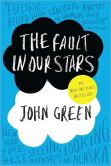Maisie Brown’s middle name is “Danger.” But that has been the most interesting thing
about her for most of her life. Maisie
dreams of being an Astronaut and finally enters a sweepstakes to win a trip to
space camp, run by a hero of hers: Dr. Howell.
To her surprise, she wins and sets off for the experience of a lifetime. At camp she distinguishes herself as one of
the smartest students there, and as the target of affection from Wilder—the
cutest boy at camp. This is all unknown
territory for Maisie, previously home-schooled and her only interaction with a
boy her age coming from her neighbor and best friend, Luther.
Meanwhile, her small group (called a fire team) wins the
competition set up by Howell and they are given the opportunity to go up in the
shuttle that connects Earth to an Asteroid in outer space. Maisie has dreamed of something like this her
entire life. Once they reach the
Asteroid, their eccentric camp director decides to show them a discovery they
have made-tokens left by an alien species.
As soon as Maisie and her team touch the tokens, they sink into their
hands. After much research, the tokens
are revealed to contain nanites (tiny robots) that give their “host”
extraordinary powers: super strength, the ability to create plastic armor, the
ability to shoot electronic pulses, the ability to build and create any
technology, and the ability to create complicated plans. Together, the five teenagers feel a
compulsion to work together-but why? A
conspiracy unravels in which Maisie and her fire team was meant to take the
tokens all along so that Wilder’s father would use them to his own
advantage. But they are meant for
something larger—something the aliens that left the tokens knew would
happen.
This novel is surprisingly accessible to all readers-even if
you are not a Science Fiction reader.
Her character development makes you root for Maisie as she has to make
decision about life, death, love, and who to trust.
Craft Technique:
·
I would recommend this novel to students to read
in our work with self-selection and Reader’s Workshop. It has wide appeal-though I would lean
towards a female audience-and its rich character development would make a good
opportunity for close-reading.
Particularly, focusing on the question “What does the author
want me to understand?” to analyze Maisie’s decisions throughout
the book.
MN Standards:
8.4.3.3 Analyze how particular lines of dialogue or
incidents in a story or drama propel the action, reveal aspects of a character,
or provoke a decision
8.4.10.10 By the end of the year, read and comprehend
literature and other texts including stories, dramas, and poems, in the grades
6–8 text complexity band proficiently and independently with appropriate scaffolding
for texts at the high end of the range.
(a. Self-select texts for personal enjoyment, interest and academic
tasks.



